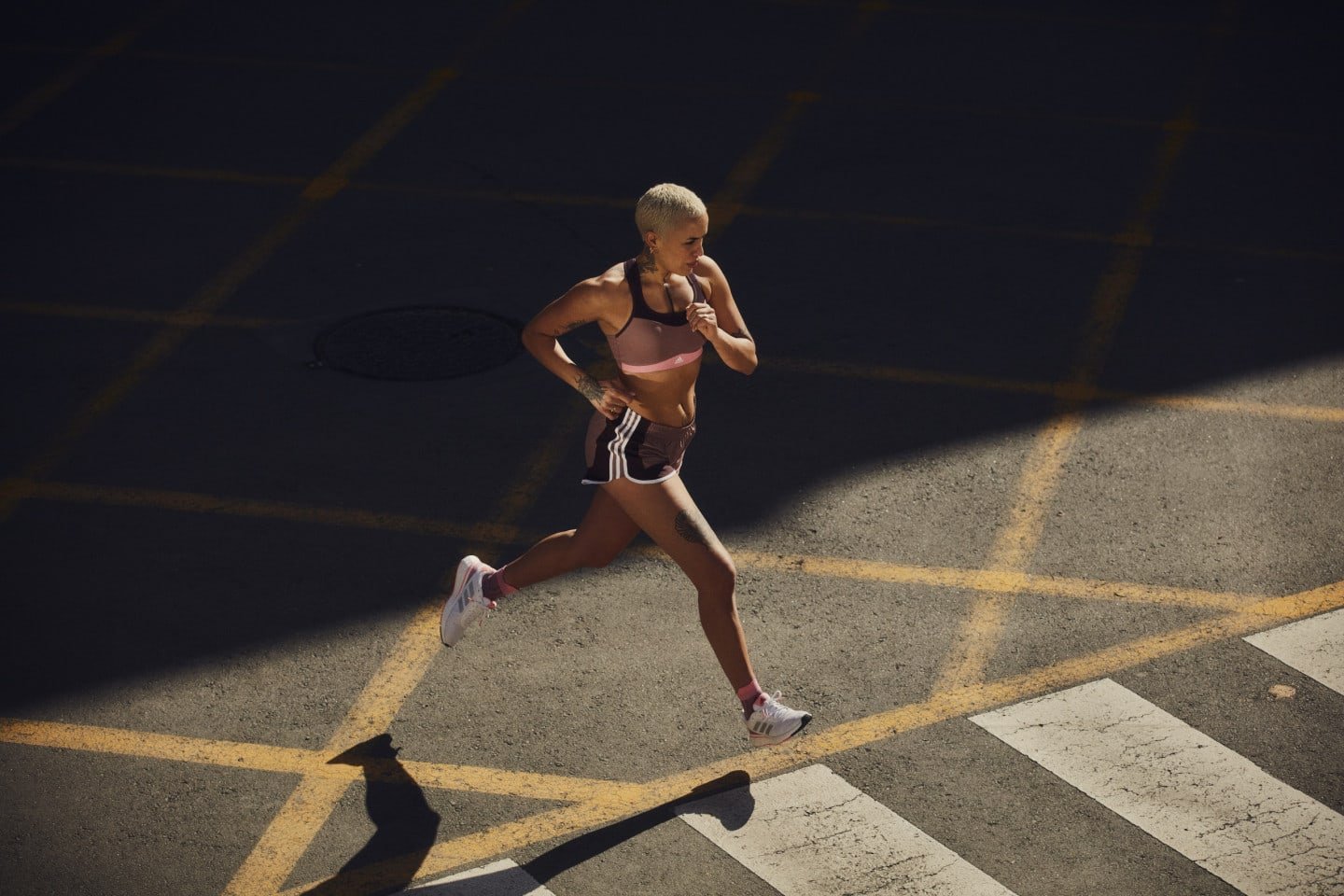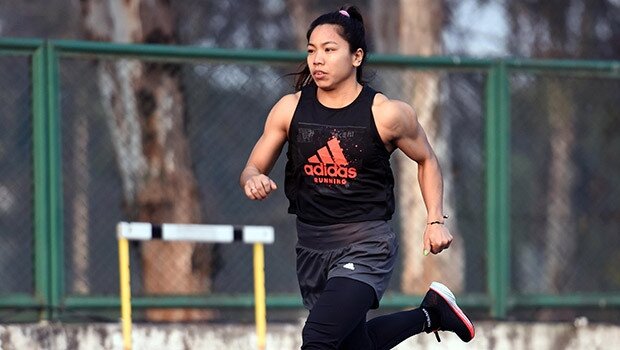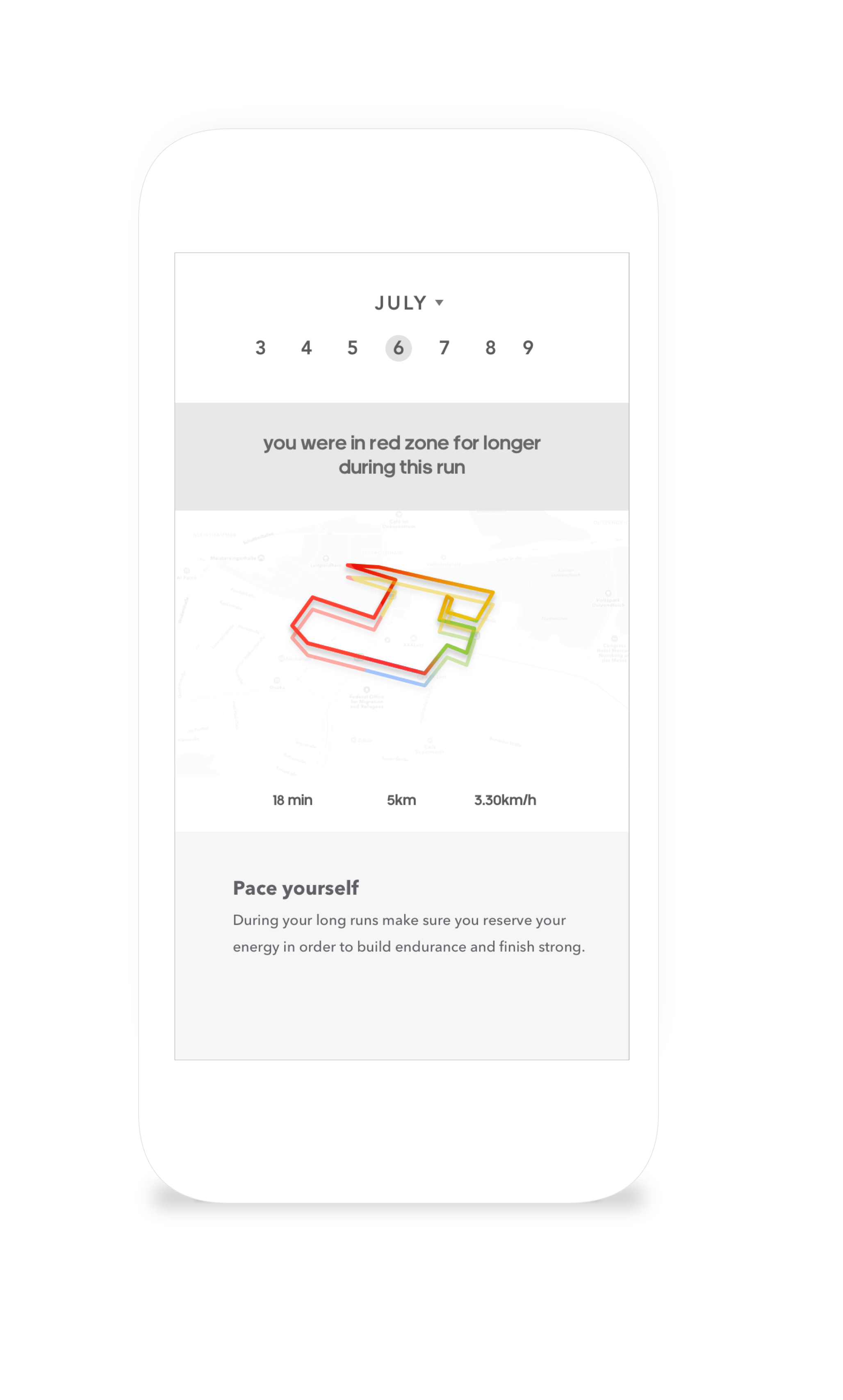
adidas Running— Setting the overarching vision for a running experience focused on women athletes.
Overview
We partnered with the Adidas Future Group to gather insights about women runners and conceptualize an ideal coached running experience for this audience.
Target Audience
Versatile Female Athletes
The focus of the brand is a demographic known as the Versatile Female Athlete (VFA). Specifically this is a female aged 25-35 who is physically active and has a desire to maintain or improve her fitness.
Running may be the only activity she participates in but more likely it will be one of several that she does every week (i.e., yoga, gym classes etc.), often combining physical activity with a social opportunity.
(Taken from the adidas Persona Insights)
We are creators and believe now is the time to shape and change the world. To us, being active isn’t a chore, a fad, or a race to skinny jeans. We stay active so we can be ready, be strong, be social, and feel connected.
— adidas Persona Insights
Gaining a deeper understanding of the audience
While adidas had fully realized the persona of a Versatile Female Athlete, we wanted to gain deeper insights into the needs, challenges, and behaviours specific to female runners.
Focus Groups
We conducted four two-hour focus groups at RRU Research Facility in New York City. In total, 19 people were selected to participate. Participants were pre- screened and had all indicated that they were very active and fit our description for Versatile Female Athletes.
Note: We wanted to ensure that the experience would not be designed in such a way that alienated and excluded a male audience, which was why it was important for us to include male participants.
Participants
10 expert runners
Runs 3 or more times per week.
Running is their primary activity.
Has previously/currently training for a race.
9 novice runners
Runs less than 3 times per week.
Running is a supplementary activity.
Has not trained or completed a race.
Activity 1
Goals and Planning Processes
Participants were asked to write down their running related fitness goals and create a training plan on calendars that reflected their individual fitness schedules.
Activity 2
Sharing Training Experiences
Participants were asked to create a skit and act out how they prepared for group runs and habits that they had when going on a run. Discussions around training experiences followed the skits.
Activity 3
Feature Card Sort
Participants were asked to design an app that suted their individual needs as runners. They were provided with cards indicating a specific feature and asked to prioritize features that were most important to them.
The findings from our focus group allowed us to create a framework for coaching as well as further define the Versatile Female Athlete in context to the sport of running.
Insights:
Participants were highly motivated by performance goals.
Planning workouts happens on a weekly basis.
Goal-based runners are more likely to use a training plan.
Runners maintaining their performance are less likely to use a training plan for guidance, and are more committed to the time spent exercising instead of counting miles/distance.
Expert runners are more likely to be interested in a voice coaching feature.
We conducted a thematic analyses to understand the different types of coaching experiences that runners have positively experienced. In addition we learned that the type of coaching runners preferred varied based on their experience level, their goals and motivations.
How might we deliver an automated coaching experience through a mobile app?
→ Encouraging
Content that inspires and persuades a user to continue their training regimen through rewards, challenges, prompts, and positive reinforcement.
→ Educational
Content that educates a user how to perform an activity and it’s benefits to the user, specifically around how to achieve proper technique and form.
→ Instructional
Content that informs a user of activities that they need to perform before, during and after a workout.
Creating behavioural personas.
Based on findings from our focus group we learned that there were two variables that determined the style of coaching each runner preferred: their level of experience with running and their goal (maintenance vs. training for an event).
Concept Development What should a coaching experience look like for a Versatile Female Athlete?
Fits into their lifestyle
Ensure that coaching fits into the VFA’s lifestyle by considering variables that can affect their training regiment such as location, weather, schedule and fitness level.
Guidance through recommendation
Learn and gather data based on user behaviours, patterns and preferences as the app is being used. This will allow the app to modify its recommendations to help guide users towards their end goal.
Flexible and non-prescriptive
Eliminate the idea of following a rigid training plan by giving VFA’s the flexibility and freedom to choose from different recommended in-app workouts and activities that bring them closer to their goals.
Provides knowledge
Offer knowledge through advice that is contextual to the runner, their performance and their goals in order to help them progress.
Reinforces progress
Ensure that progress is being shown in a way that will help the VFA see improvement more often and for a shorter period of time.
Fits into their lifestyle
Smart Integrations
Consider the external variables that would impact workout suggestions such as schedule, weather, and location.
Leverage the data from 3rd party applications that would contribute to making smart workout recommendations for the VFA (Google Calendar, Location, HealthKit..etc.) .
Combine in-app workouts and outside activites. Categorize by type, intensity, duration and purpose
Recommend a combination of in-app workouts with suggested activities and fitness classes to keep the off- season VFA engaged.
Provides guidance through recommendation
Behaviour-based recommendations
Smart recommendations informed by user behaviour
Take time to keep learning about the user by continuously gathering data about their behaviour, preferences and needs in order to better personalize their coaching experience through smart recommendations.
Goal-based recommendations
Determine the VFA’s baseline fitness level and performance and make recommendations that will help guide them towards their goal.
Personalized recommendation
Flexible and non-prescriptive
Offer a variety of activities
Give the VFA’s the flexibility and freedom to dismiss recommendations and try new or different workouts that will still keep them on track towards their goals.
Prompt for user input to help with the accuracy of recommendations
Give the VFA’s the ability to enter data in order to tailor the recommendations that they receive. This will allow the content suggested to adapt to the VFA’s changing needs, goals and lifestyle.
Provides knowledge
Pre-workout tips
Provide contextual knowledge
Provide advice specific to each recommended in-app workout that will help the VFA understand what to focus on, and how to get the most of their workout. This content could also include tips related to form, nutrition or recommendations for warm-up.
Post-workout tips
Provide advice for recovery and improvement
Provide advice after each workout containing general tips on recovery or performance-based tips on how to improve for their next workout.
Reinforce progress
Achieveable goals
Encourage habitual goal setting
Help set achievable goals for the VFA based on their assessed level of fitness and recorded performance data. Present goal setting once the app has learned and gathered enough data to know about the user’s capabilities, fitness level and behaviour in order to present goals that are achievable.
Training moments
Reminder of progress and personal bests
Remind the VFA of key training moments, milestones or personal bests that they’ve experienced in order to feel a sense of achievement and encouragement.


















